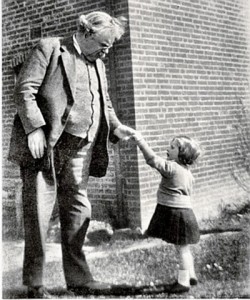Death and Daily Laughter
In 1921 G. K. Chesterton traveled to America for a lecture tour and upon his return wrote of his experiences in a short book entitled “What I Saw in America”. In the introduction Chesterton comments on some of his preconceptions prior to the visit and mentions a couple of things he believed an early 20th century Englishman such as himself would find difficult to comprehend regarding America. One of these is what he calls the “theory of equality”, claiming that the hierarchical and aristocratic Englishman would likely find such a theory an illusion.
In truth it is inequality that is the illusion. The extreme disproportion between men, that we seem to see in life, is a thing of changing lights and lengthening shadows, a twilight full of fancies and distortions. We find a man famous and cannot live long enough to find him forgotten; we see a race dominant and cannot linger to see it decay. It is the experience of men that always returns to the equality of men; it is the average that ultimately justifies the average man. It is when men have seen and suffered much and come at the end of more elaborate experiments, that they see men as men under an equal light of death and daily laughter; and none the less mysterious for being many.
G. K. Chesterton


